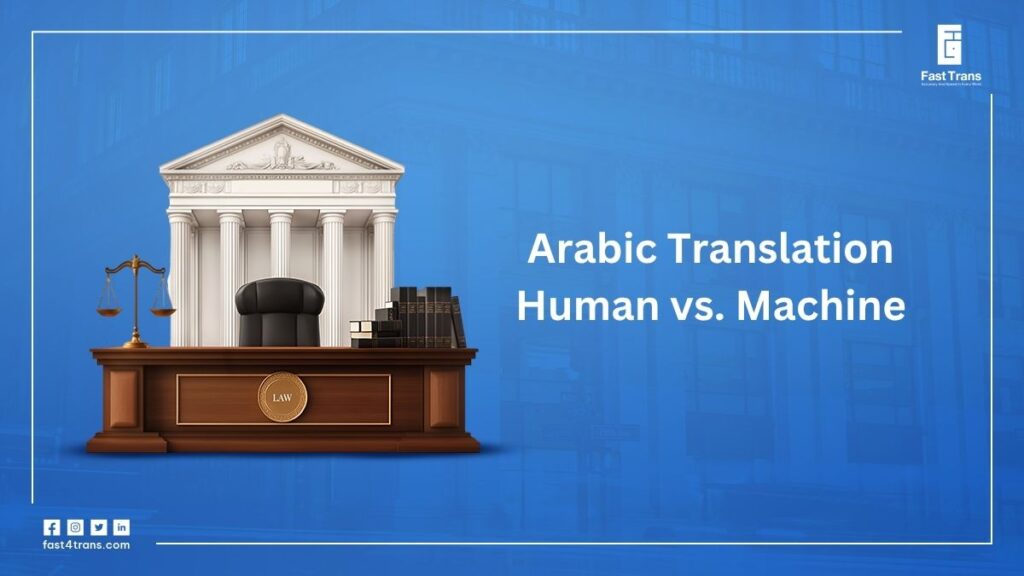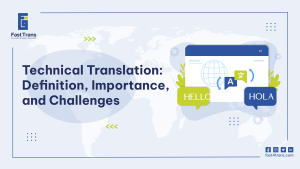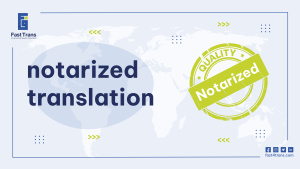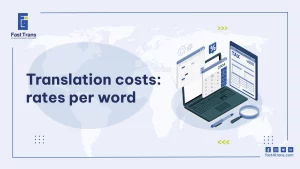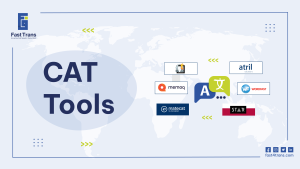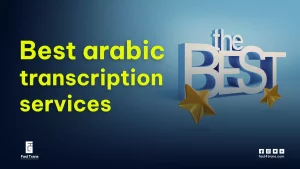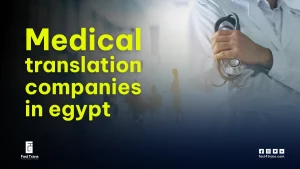In today’s interconnected world, translation has become more than just a convenience; it is a necessity. From international business to academic research and digital media, accurate translation bridges cultures and opens doors to global opportunities.
Among the world’s major languages, Arabic stands out as both widely spoken and uniquely complex. With over 400 million speakers across diverse regions, Arabic is rich in dialects, cultural expressions, and linguistic subtleties that cannot always be captured by direct word-for-word translation. This complexity makes it one of the most challenging languages for machine translation systems to handle effectively.
This article explores the critical differences between professional Arabic human translation and machine translation, highlighting their strengths, limitations, and the contexts in which each is most appropriate.
The Growing Demand for Arabic Translation
As globalization accelerates, the demand for Arabic translation continues to grow across nearly every sector. In the business world, companies seeking to expand into Middle Eastern and North African markets rely on accurate translation to build trust, tailor marketing campaigns, and ensure compliance with local regulations. In law, precise translation of contracts, legislation, and immigration documents is essential, where even the smallest error can have serious consequences. Similarly, in academia and healthcare, Arabic translation plays a vital role in making research, medical records, and patient communication accessible to Arabic-speaking communities. The media industry also depends heavily on translation to produce multilingual content that resonates with diverse audiences.
Arabic’s global significance further fuels this demand. With more than 400 million native speakers across over 20 countries, and millions more who use it as a second language, Arabic is one of the six official languages of the United Nations and a key language for international diplomacy, trade, and cultural exchange.
In this context, accurate translation is not just about transferring words from one language to another; it is about ensuring mutual understanding, cultural sensitivity, and effective communication. A single mistranslation can distort meaning, damage reputations, or even create conflict, which underscores the need for reliable Arabic translation services.
What is Machine Translation (MT)?
Machine Translation (MT) refers to the use of computer systems and artificial intelligence to automatically translate text from one language to another. Popular tools such as Google Translate, Microsoft Translator, and other AI-powered platforms rely on advanced algorithms, particularly Neural Machine Translation (NMT), to predict and generate translations.
NMT models are trained on massive bilingual text datasets, enabling them to recognize patterns, align phrases, and deliver translations that are increasingly fluent and natural compared to earlier rule-based or statistical systems.
The appeal of machine translation lies in its clear advantages. It provides translations instantly, often at no cost, and can process large volumes of text far faster than a human translator. This makes MT an attractive option for quick drafts, informal communication, or when the goal is simply to grasp the general meaning of foreign-language content.
However, machine translation still faces significant limitations, especially when dealing with Arabic. The system often produces literal translations that ignore cultural nuances, leading to awkward or misleading phrasing. It struggles with idioms, metaphors, and proverbs that require cultural interpretation rather than direct word substitution.
Moreover, Arabic’s wide range of dialects, from Egyptian and Levantine to Gulf and Maghreb, poses a challenge for MT, which is usually trained on Modern Standard Arabic (MSA). As a result, translations can lose accuracy, tone, and intended meaning, highlighting the gap between machine output and professional human translation.
The Value of Professional Human Translation
While machine translation tools have advanced significantly, professional human translators remain indispensable for complex, nuanced communication across languages and cultures.
1. Deep Understanding of Context, Tone, and Culture
Human translators grasp subtle layers of meaning beyond literal word conversion. They recognize sarcasm, navigate shifting formality levels, and understand when cultural references need adaptation rather than direct translation. This contextual awareness is crucial for content involving humor, emotion, or cultural implications that automated systems often miss.
2. Handling Dialects and Regional Variations
The Arabic language illustrates this complexity perfectly. While Modern Standard Arabic (MSA) serves as the formal standard, regional dialects like Egyptian, Gulf, and Levantine Arabic each carry distinct cultural markers. Professional translators understand not just vocabulary differences but the social contexts where specific dialects are appropriate, ensuring translations feel natural to their intended audiences.
3. Accuracy in Sensitive Fields
Specialized domains demand human expertise. Legal translation requires perfect precision to avoid costly litigation. Medical translation affects patient safety through accurate terminology and dosage instructions. Technical translation needs subject matter expertise to convey complex concepts correctly. Literary translation must preserve artistic intent while remaining culturally accessible.
Professional translators in these fields bring specialized training, years of experience, and ongoing education to stay current with evolving terminology and industry standards.
4. Localization for Target Audiences
Human translators serve as cultural bridges, providing complete cultural localization beyond basic translation. They advise on cultural sensitivities, recommend alternative metaphors that resonate locally, and suggest timing considerations for content releases. This cultural consulting requires nuanced judgment that ensures communication truly connects across cultural divides.
The value of professional human translation lies in providing cultural intelligence, contextual understanding, and specialized expertise that remain essential for meaningful cross-cultural exchange.
Common Mistakes in Machine Translation
Machine translation errors can range from amusing to costly, often stemming from literal interpretations that miss cultural context and nuanced meaning.
1. Real-World Mistranslation Examples
Major brands have suffered embarrassing mistakes when relying solely on automated translation. KFC’s famous “finger-lickin’ good” slogan was machine-translated into Chinese as “eat your fingers off,” while Pepsi’s “Come alive with Pepsi” became “Pepsi brings your ancestors back from the dead” in Chinese markets. Medical contexts prove even more dangerous—machine translations have rendered “once daily” as “eleven daily” due to numeral confusion, and “apply topically” as “use orally.”
2. Machine vs. Human Translation Comparison
Consider this Arabic sentence: “الوقت كالسيف إن لم تقطعه قطعك”
Machine Translation: “Time is like a sword; if you do not cut it, it will cut you.”
- Produces literal, awkward phrasing
- Misses the proverb’s cultural significance
- Creates confusion about “cutting time”
Human Translation: “Time is like a sword—if you don’t use it wisely, it will work against you” or “Make good use of time, or time will work against you”
- Captures the intended meaning of time management
- Uses natural English phrasing
- Conveys the wisdom of the Arabic proverb clearly
These examples illustrate why human translators remain crucial for accurate, culturally appropriate communication that truly serves its intended purpose.
When to Use Machine Translation?
Machine translation can be an effective tool in certain situations where speed matters more than precision. For example:
1. Quick Drafts and Informal Communication
MT is ideal for translating emails, chats, or internal documents when the goal is simply to understand the gist rather than produce polished text.
On average, MT can process millions of words per hour, compared to a human translator’s 2,000–3,000 words per day.
2. Initial Translation Before Human Post-Editing (MTPE)
Many companies now use MT to generate a first draft, which is then refined by a professional human translator.
This approach can reduce translation time by 30–50% and costs by 20–40%, while still ensuring high-quality results.
MT is best used as a supporting tool, not a final solution, particularly for low-risk, time-sensitive, or internal content where perfect accuracy is not essential.
When is Human Translation Essential?
There are situations where machine translation simply cannot be trusted, and only professional human translation ensures accuracy, reliability, and cultural appropriateness. These include:
1. Official Documents and Contracts
When it comes to legal documents, contracts, immigration papers, or government filings, accuracy is non-negotiable. A single mistranslated word can alter the meaning of an entire clause, leading to disputes, invalid agreements, or even financial losses.
Studies in the legal field show that even a 1% mistranslation rate can have serious consequences. Human translators bring the expertise needed to ensure every term, phrase, and nuance is conveyed precisely, safeguarding the integrity of official documentation.
2. Marketing and Branding Content
Marketing thrives on creativity, tone, and cultural resonance. A slogan that works perfectly in one language may be confusing, or even offensive, when translated literally by a machine. This is why professional translators are essential for adapting brand messages to new markets.
Research shows that localized campaigns handled by humans achieve 2–3x higher customer engagement compared to direct translations. A skilled human translator can capture humor, emotion, and cultural nuance in ways that machines cannot, ensuring that a brand’s image is preserved and strengthened.
3. Religious and Literary Works
Religious texts, novels, poetry, and other literary works demand more than word-for-word translation; they require sensitivity to rhythm, style, and deeper meaning. Machines often mistranslate idioms, metaphors, and artistic expressions, stripping the text of its essence.
Human translators, on the other hand, can preserve 100% of the intended tone, emotion, and cultural depth, making the work resonate with new audiences while respecting its original spirit. This is especially crucial in Arabic literature and religious texts, where meaning is often layered and culturally specific.
4. High-Stakes Communication
Fields like healthcare, law enforcement, and diplomacy involve communication where mistakes can have life-or-death consequences. In medicine, for example, a mistranslated instruction in a patient’s record could lead to life-threatening errors.
Similarly, in diplomacy or court proceedings, mistranslations can spark misunderstandings with severe political or legal consequences. In such high-stakes contexts, only human translators can guarantee the accuracy and cultural sensitivity required to avoid costly or dangerous mistakes.
Read Also: How to Choose The Right Arabic Dialect For Your Business
The Hybrid Future: Human With AI Collaboration
1. Post-Editing Machine Translations (MTPE)
One of the most promising uses of machine translation today is as a first draft that human translators refine through a process known as post-editing. In this workflow, AI quickly generates a rough version of the text, and the human translator then ensures accuracy, cultural relevance, and stylistic polish. This approach can reduce translation time by 30–50% and cut costs by 20–40%, while still delivering high-quality results that meet professional standards.
2. AI Assisting, Not Replacing Human Translators
AI is best viewed as a tool to support translators rather than a replacement for them. Machines can handle repetitive tasks, such as terminology management or bulk translations of low-stakes documents, freeing human translators to focus on the creative and context-sensitive aspects of the job. By handling the heavy lifting, AI allows professionals to concentrate on nuance, meaning, and cultural adaptation—areas where human judgment remains irreplaceable.
3. Technology as a Productivity Booster
Far from threatening the profession, AI has the potential to enhance it. With the right balance, technology can increase the output of human translators without sacrificing quality. Translation memory tools, glossary management systems, and AI-driven suggestions make it possible for translators to work faster and more consistently. However, the final responsibility still lies with humans, who provide the contextual understanding and cultural sensitivity that no machine can replicate. The future of translation, therefore, is not machine vs. human, but machine with human.
Conclusion
In an increasingly globalized world, translation is no longer a luxury but a necessity, especially when it comes to a language as rich and complex as Arabic. While machine translation has made significant strides in speed and accessibility, it still falls short in areas requiring cultural awareness, contextual sensitivity, and precision.
Automated systems may serve well for quick drafts or informal communication, but they cannot fully capture the depth, nuance, and cultural layers embedded in Arabic.
This is where professional human translators prove indispensable. From legal documents and marketing campaigns to religious texts and literary works, human expertise ensures that meaning is preserved, tone is respected, and communication resonates with its intended audience. The future of translation lies not in choosing between humans and machines, but in combining their strengths, leveraging AI for efficiency while relying on human translators for accuracy, creativity, and cultural intelligence.

